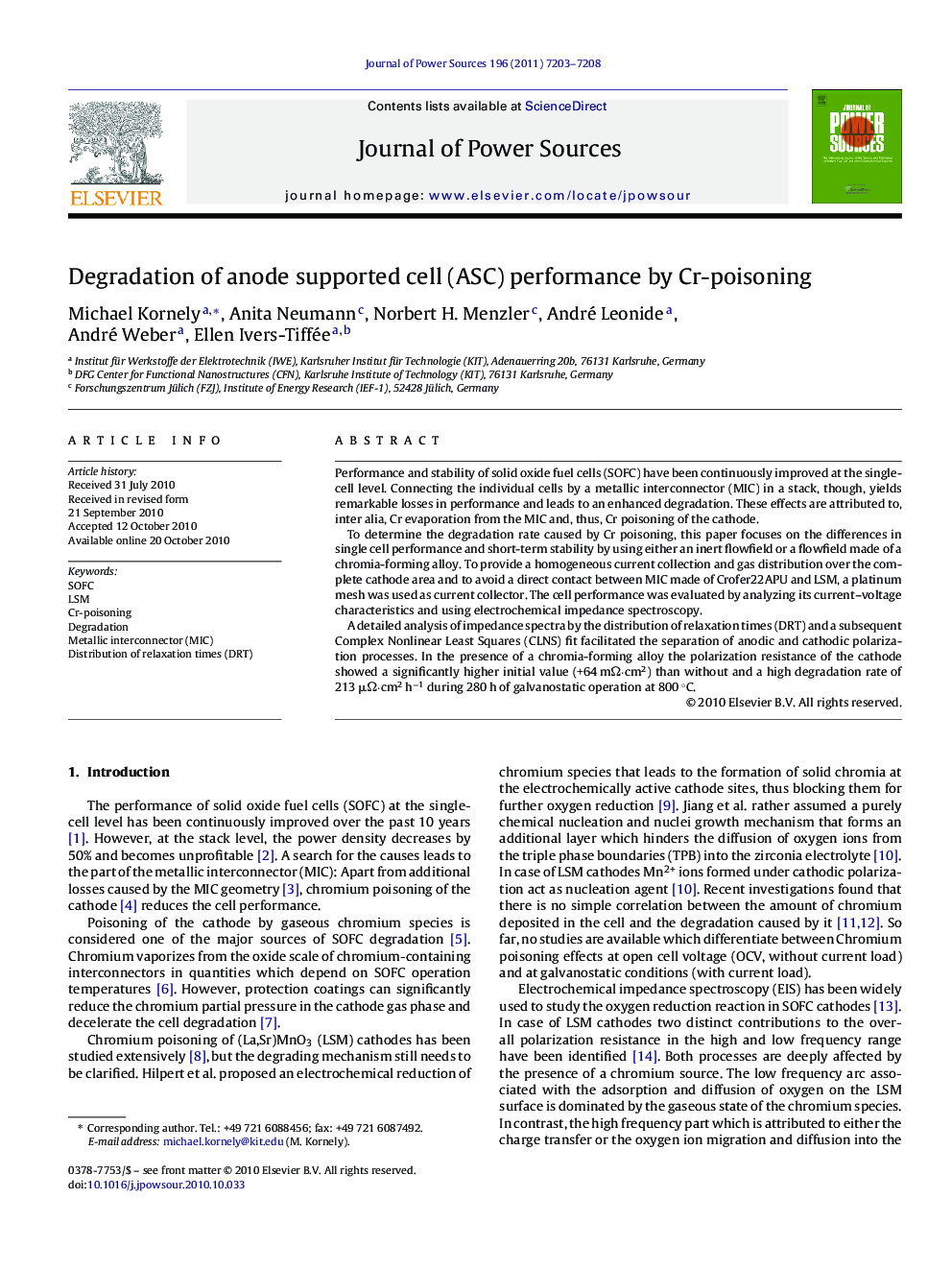| Article ID | Journal | Published Year | Pages | File Type |
|---|---|---|---|---|
| 1288503 | Journal of Power Sources | 2011 | 6 Pages |
Performance and stability of solid oxide fuel cells (SOFC) have been continuously improved at the single-cell level. Connecting the individual cells by a metallic interconnector (MIC) in a stack, though, yields remarkable losses in performance and leads to an enhanced degradation. These effects are attributed to, inter alia, Cr evaporation from the MIC and, thus, Cr poisoning of the cathode.To determine the degradation rate caused by Cr poisoning, this paper focuses on the differences in single cell performance and short-term stability by using either an inert flowfield or a flowfield made of a chromia-forming alloy. To provide a homogeneous current collection and gas distribution over the complete cathode area and to avoid a direct contact between MIC made of Crofer22APU and LSM, a platinum mesh was used as current collector. The cell performance was evaluated by analyzing its current–voltage characteristics and using electrochemical impedance spectroscopy.A detailed analysis of impedance spectra by the distribution of relaxation times (DRT) and a subsequent Complex Nonlinear Least Squares (CLNS) fit facilitated the separation of anodic and cathodic polarization processes. In the presence of a chromia-forming alloy the polarization resistance of the cathode showed a significantly higher initial value (+64 mΩ·cm2) than without and a high degradation rate of 213 μΩ·cm2 h−1 during 280 h of galvanostatic operation at 800 °C.
